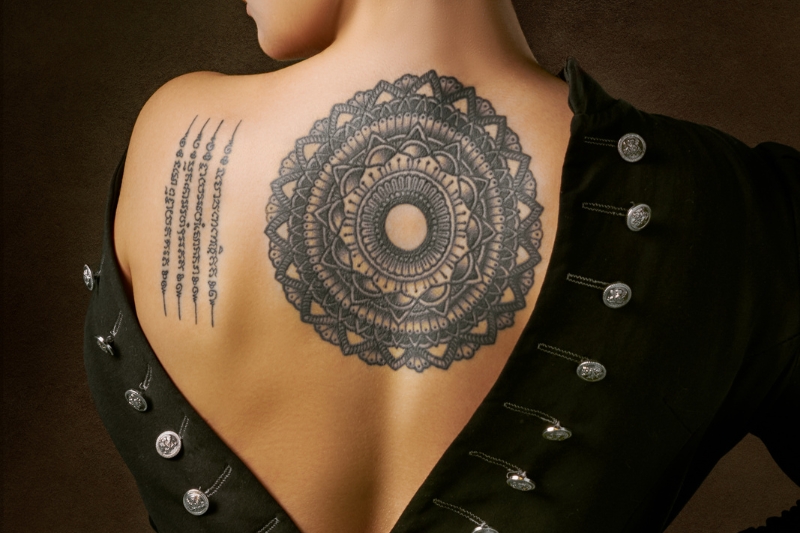Asian Back Tattoo Designs: A Cultural Exploration Revealing Symbolism
– The culture and art of tattoos have been enjoyed in Asia for thousands of years.
– One of the earliest known records of tattoos in Asia is from 3000 B.C. in Japan.
– Asian tattoos have elements inspired by spirituality, mythology, religion, and nature.
– Asian tattoos often incorporate elements of wind, waves, and fire.
– Asian tattoos can be divided into two main categories: modern and traditional.
– Traditional Asian tattoos are large pieces interconnected across the body, often used to tell a story, distinguish class or group, or for religious and spiritual purposes.
– Modern Asian tattoos draw upon traditional design concepts but are more creative, artistic, and use the body’s contours.
– Japanese tattoos, referred to as Irezumi, are vibrant and inspired by folklore and tradition.
– Common imagery in Japanese tattoos includes koi fish, dragons, geishas, and flowers.
– Japanese tattoos were historically larger pieces often becoming full-body suits for self-adornment, spiritual, or magical purposes.
– Japanese tattoos became popular among the lower working class, including gangs called the Yakuza.
– The association with criminal activity led to the banning of Irezumi for some time in Japan.
– Asian back tattoos are generally viewed as taboo in various cultures in East Asia.
– They were historically used to belittle ethnic minorities, punish criminals, and brand slaves in Chinese history.
– Tattooing goes against the cultural beliefs of the Chinese, Japanese, and Korean societies.
– Efforts have been made in China to curb the popularity of tattoos, with bans or censorship in place and soccer players required to cover their body art.
– In Japan, tattoos were associated with criminals and used as punishment during a historical period.
– Tattoos are still frowned upon in Japan and are linked to the Yakuza.
– Many businesses in Japan still ban customers with tattoos.
– In South Korea, tattoos are connected with anti-social individuals, including criminals, gangsters, or delinquents.
– Professional doctors are legally allowed to open tattoo parlors in South Korea.
– The army in South Korea prohibits tattoos, but people can have tattoos after serving in the military.
– The tattoo culture is gaining popularity, particularly among youth in South Korea.
– Factors to consider when choosing an Asian/Japanese tattoo include placement, with larger tattoos often looking best on limbs, the back, or torso.
– The pain threshold varies depending on the placement of the tattoo.
– Cost is an important factor to consider when getting a tattoo.
– Japanese and Asian tattoos tend to be very costly due to their large size and intricate detail.
– Traditional Japanese tattoos feature bold ink colors, including blues, oranges, reds, greens, and purples.
– Dragon tattoos symbolize bravery, strength, and wisdom.
– Demon tattoos, particularly the Oni depiction, represent balance between good and evil and consequences for harmful actions.
– Koi fish tattoos symbolize success, luck, resilience, and strength, with different colors having different meanings.
– Cherry blossom tattoos are associated with joy and are commonly used in Japanese tattoo sleeves.
– Foo dog tattoos represent protection and good fortune.
– Asian tattoos have originated from Asian cultures and have been enjoyed for thousands of years.
– The style of these tattoos is often inspired by spirituality, mythology, religion, and nature.

